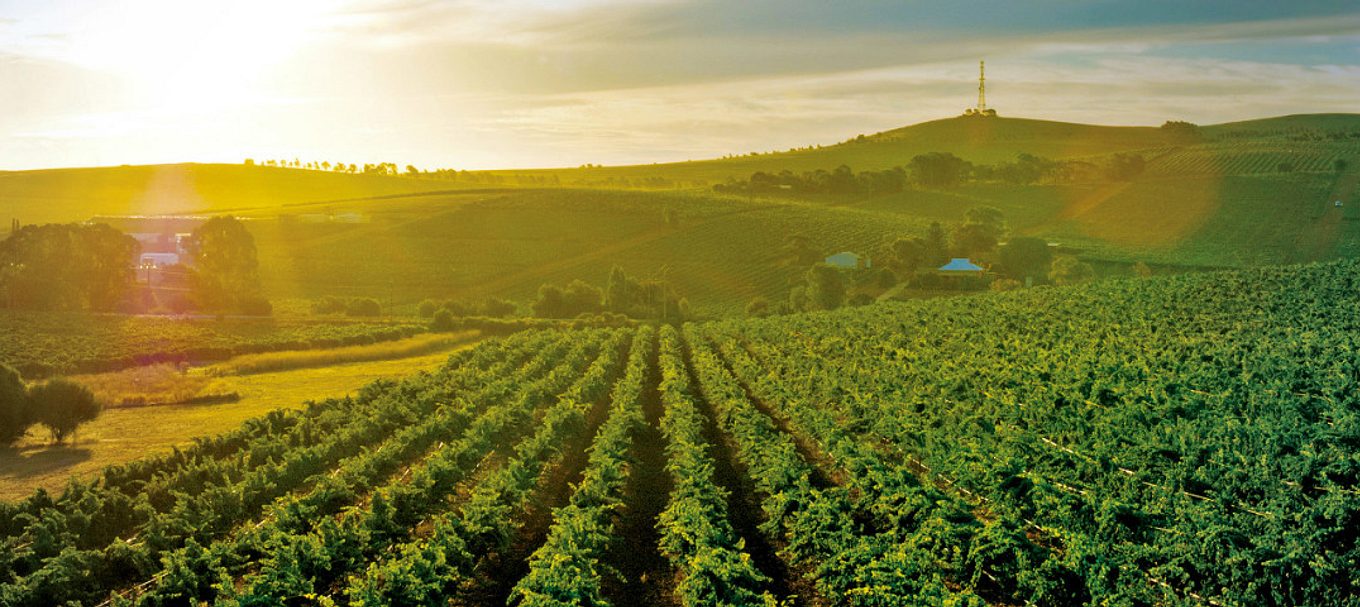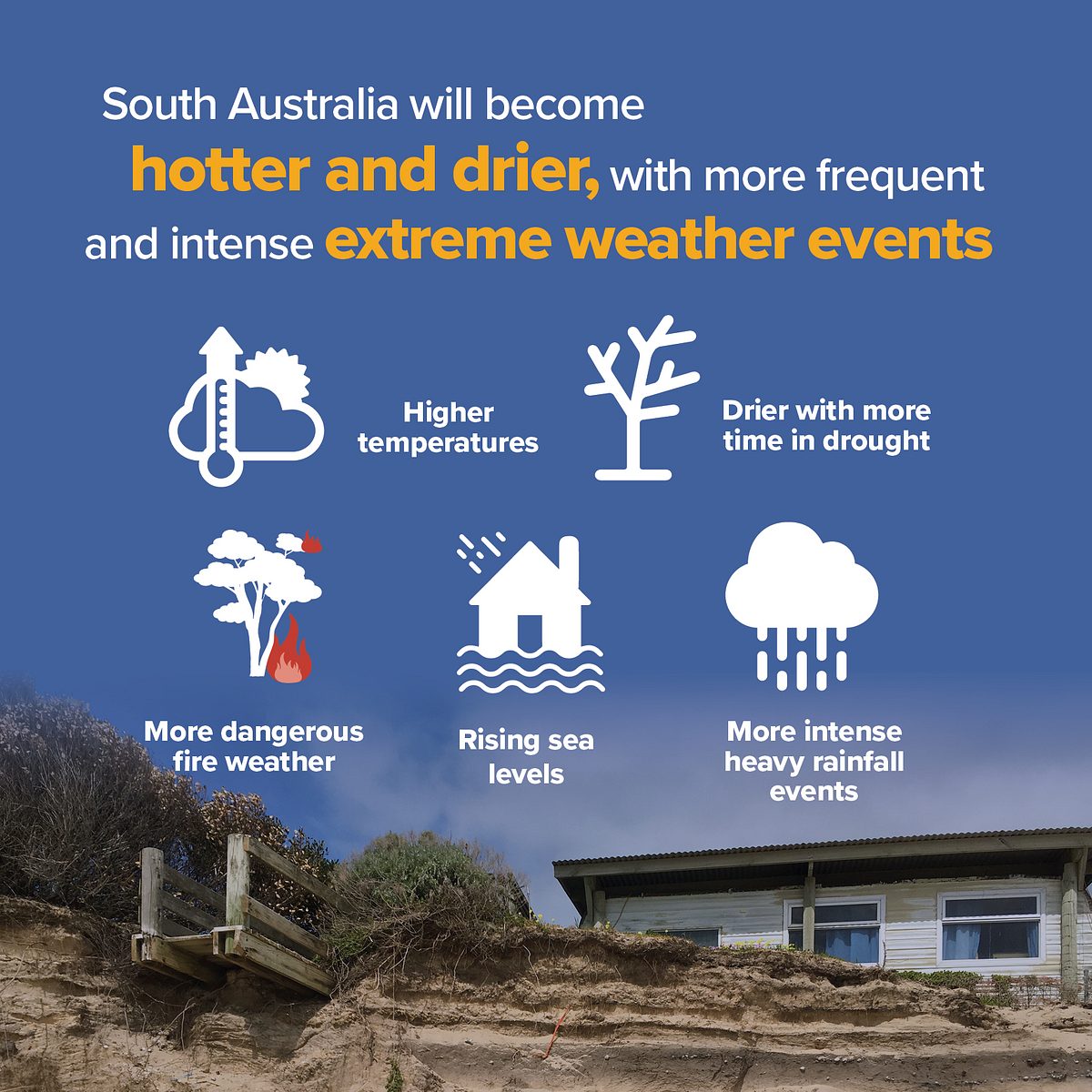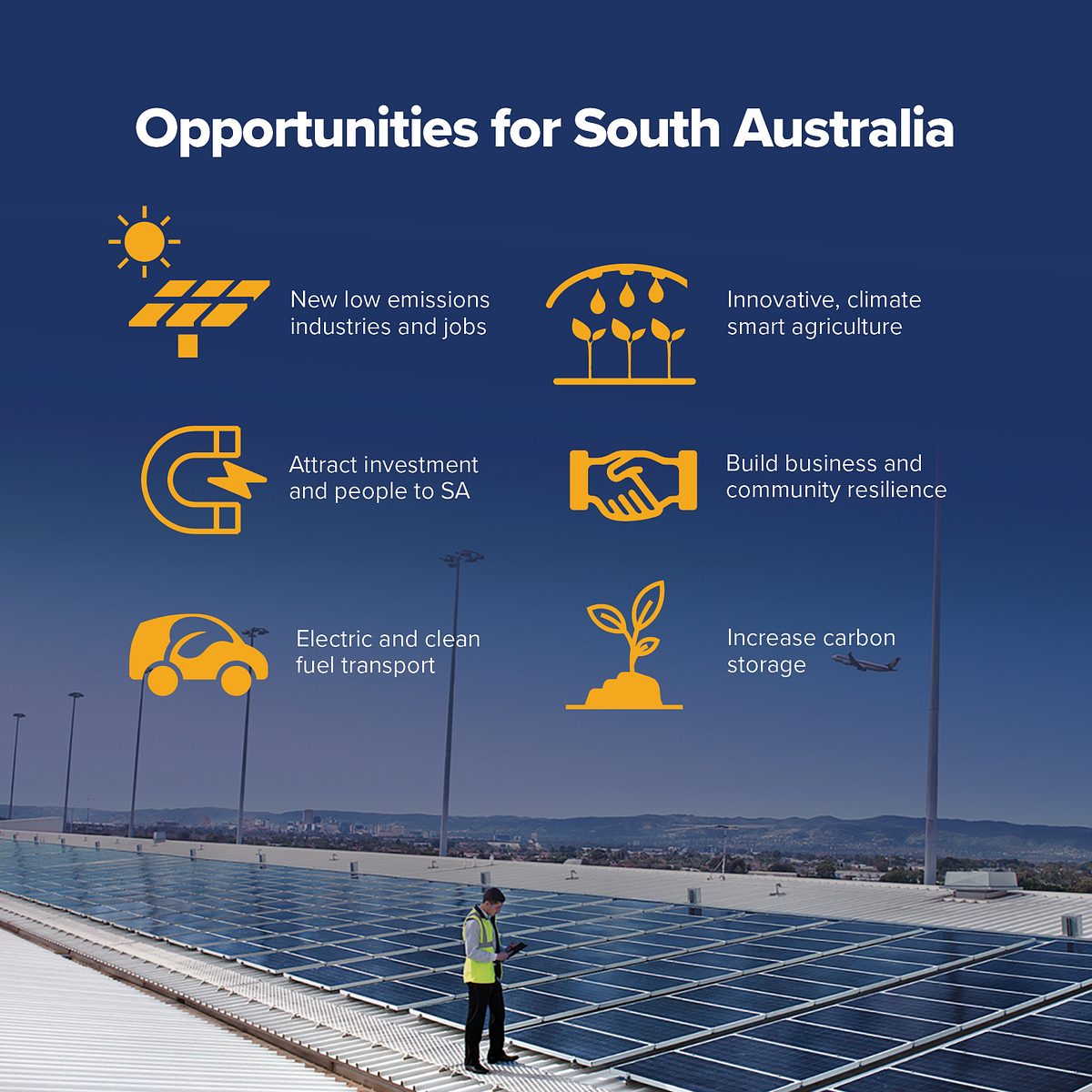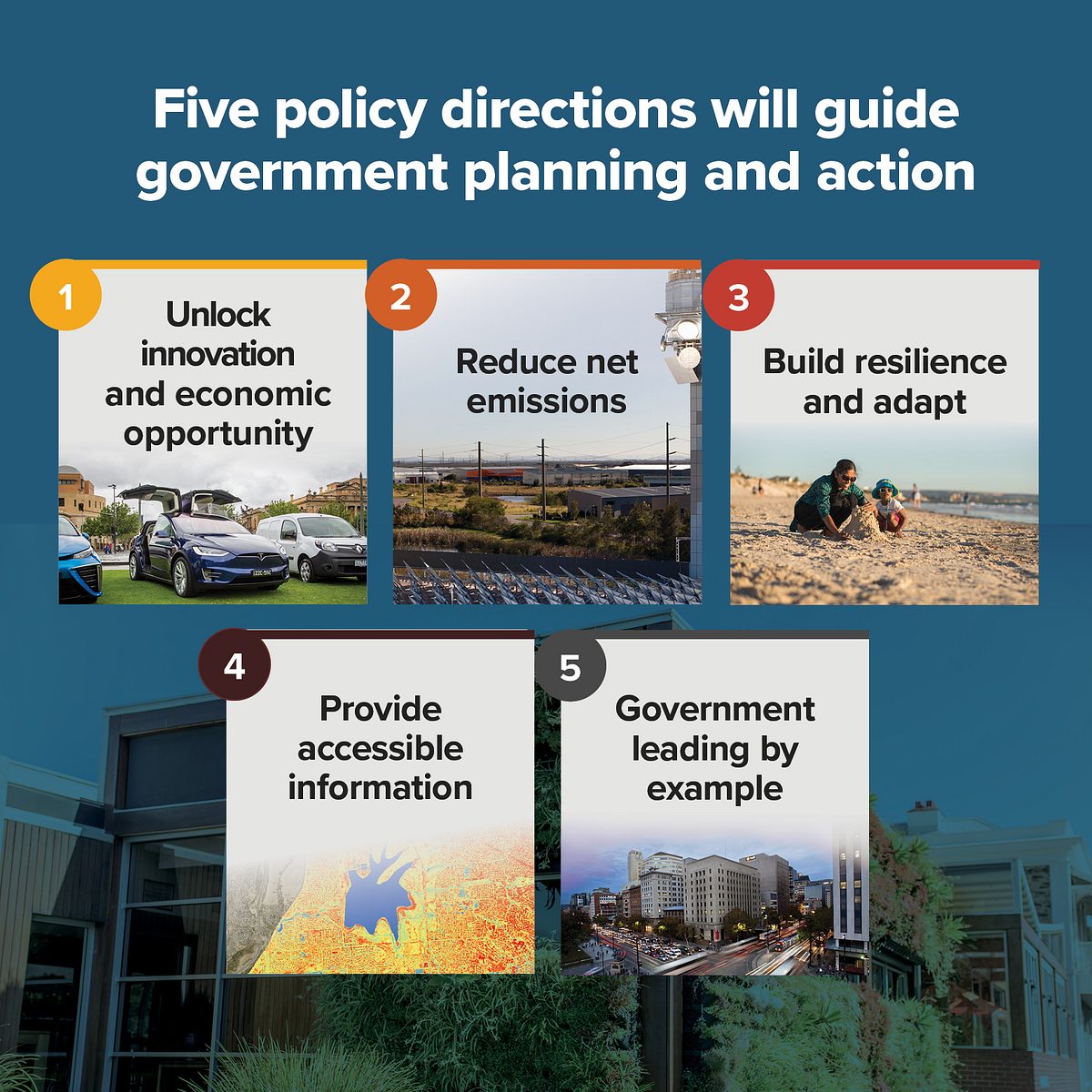
Unpacked: South Australia’s new plan to respond to climate change
South Australians have been taking action to tackle the challenges of rising temperatures, changing rainfall patterns and rising sea level.
The state government has set out its policy directions to help guide its work to mitigate climate change, unlock new jobs and economic growth, as well as enhance South Australia’s livability.
Before we explain what this work looks like, let’s start with some basics about climate change and its impact on our state.
What is climate change and what does it impact?
The term ‘climate change’ refers to a long-term change to climate, like temperature and rainfall.
Scientists say our climate is warming and that this warming is caused by excess greenhouse gases being released into the atmosphere.
Excess greenhouse gases are caused by the use of materials like oil, coal and natural gas, which give energy to things like cars, planes, trains and heaters.
These gases cause the planet to heat up by acting as a blanket that traps heat near the surface.
This has a number of impacts like hotter days, less rainfall, rising sea levels and a greater number of extreme weather events such as floods, storms and bushfires.

How much is South Australia’s climate changing?
South Australia is becoming hotter and drier, with more frequent and intense extreme weather events.
This includes hotter days and longer heat waves, less rainfall overall, more days of extreme fire danger, sea level rises (estimated to be up to 0.8 metres by 2100) that will, in turn, increase coastal erosion, and heavy rainfall events that will increase the risk flooding.
How will climate change impact South Australians?
A hotter and drier climate and more extreme weather events will affect our economy and lifestyle.
This includes:
- hotter weather increasing the risk of people experiencing heat stress
- extreme weather events causing property damage, which incur repair costs
- hotter weather drying rivers and lakes, impacting food and water availability.
While we need to manage these risks, there are also opportunities to innovate and create new goods and services that reduce the amount of greenhouse gases that are released into the atmosphere.

What has been done to respond to climate change in South Australia?
South Australia is a leader in the clean energy transition, with success in solar energy, wind power and battery storage.
This has helped South Australia reduce its carbon emissions by 33 per cent since 2005.
Innovation hubs like the Tonsley Innovation District are bringing together research and education, as well as business and start-ups, to foster industries like clean technology and renewable energy.
Our state is also supporting communities and environments to adapt, with strong initiatives guiding coastal protection, urban greening and water sensitive urban design. A Blue Carbon Strategy for South Australia to protect coastal environments and store carbon has been released and a renewable hydrogen industry is also being developed.
What’s next for South Australia?
Over time it is expected that SA will increase the amount of energy generated from renewable sources, such as wind and solar, and export this renewable energy to other states.
Using more renewable energy like this and less materials like coal, will help to reduce the amount of greenhouse gases emitted into the atmosphere.

The South Australian Government Climate Change Actions outlines a range of actions that will play a key role in implementing these directions.
Find out more about how the action plan will help build a strong, climate smart economy, further reduce greenhouse gas emissions and support South Australia to adapt to a changing climate.
How can you get involved?
Visit the climate change website, follow Climate Smart SA on Facebook or sign up for updates.





